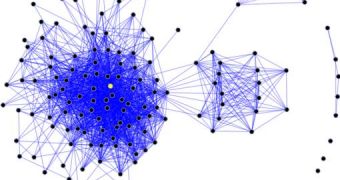Back in 2006, sociologists Miller McPherson, Lynn Smith-Lovin and Matthew E. Brashears reported that the number of Americans who lived in social isolation – defined as those people who did not discuss important matters with anyone – had increased by more than 300 percent between 1985 and 2004. The paper has ever since sparked heated debates among sociologists, psychologists and other researchers. Now, a paper published in the August issue of the journal American Sociological Review (ASR) comes to throw doubts on the previous finds, disputing the reliability of the data.
University of California in Berkeley (UCB) sociologist Claude S. Fischer, the author of the new study, argues that the previous finds are highly implausible. He believes that the immense scale of the change alone, a more than three-fold increase in just 20 years, is proof enough of his claims. He adds that the General Social Surveys (GSS) data that was used for the other investigation was flawed, and that it did not reflect a general, authentic tendency among the American public. Fischer also believes that he discovered contrary results in data on other types of network ties, e! Science News informs.
“Results that seem to be too good, too strong or too stark to be true probably are, as seems to be the case in this instance. The survey question used in 2004 to measure social network size yielded results that were so inconsistent with other data and so internally anomalous and implausible that they are almost surely the product of an artifact,” Fischer says. He also hints at the fact that other surveys found no similar changes in the US citizens' social connections within the same frame. Indeed, if such major isolation patterns had occurred, they would have been detected by other teams as well.
McPherson and colleagues, however, argue that most of Fischer's arguments are derived from very small sub-sets of data, which are not in any way an indicator of the overall tendencies. “We are very pleased that Professor Fischer's reanalysis supports our original contention that the 2004 data overstate the prevalence of social isolation, a caution that was included in the abstract of our original 2006 report,” McPherson says.
“However, we disagree that the data show no change in social isolation 1985-2004. Our statistical analysis and those of independent observers continue to find significant change in social isolation as measured in the publicly available GSS data. Interested readers can easily access those data on several public Web sites and do their own analyses. We eagerly await new network data from the 2010 General Social Survey,” he concludes.

 14 DAY TRIAL //
14 DAY TRIAL //